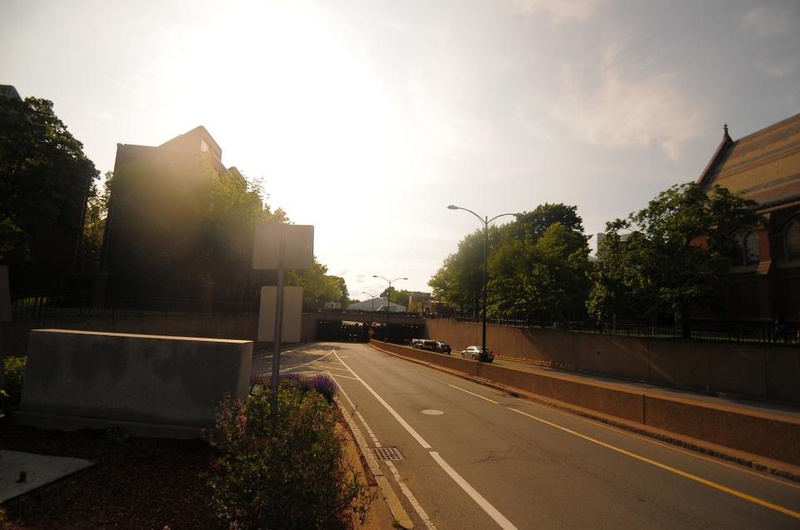For the Class of 2012, the banging of heavy machinery and the dust of construction have been a part of everyday life in Harvard Square. Since this year’s graduating class arrived on campus, the Square has received a series of drastic face lifts.
This roadwork and improvement is part of a long-term effort to beautify Harvard Square that all stems from “Polishing the Trophy,” a plan published in the late 1990s for refurbishing Cambridge’s preeminent hub of tourism and intellectual life.
In the past decade, this beautification process has seen collaboration between the city, the Harvard Square Business Association, and Harvard—all acting as what Thomas J. Lucey, Harvard’s director of community relations for Cambridge, refers to as “ongoing stewards of the Square.”
But though these stewards have accomplished much in the past several years, community members have now proposed a still more ambitious plan that would bring the most visible change yet to Harvard Square. If adopted, it will transform Sheldon Cohen Island, the stretch of red brick home to Out of Town News, the Pit, and the MBTA station.
Made public just this week , this project—if approved by the city—would check off one of the last boxes remaining on a list that Cambridge has used to guide its improvement of Harvard Square since 2006.
Multimedia
YEARS IN THE MAKING
The city government, Harvard Square Business Association, and the University have spent the past decade carefully planning the improvement of public space in Harvard Square.
The effort, informally known as the Harvard Square beautification project, was conceived in the late 1990s. At that time, Harvard Square had not seen major construction since the 1980s, when the Harvard Square MBTA stop was redone.
Beautification first became a topic of discussion when city officials began to seriously consider making Harvard Square a Business Improvement District, a designation signalling an area’s need for revitalization.
Though the city ultimately did not designate Harvard Square as a BID, its consideration inspired John P. DiGiovanni, president of Trinity Property Management, and other Square business owners to take a hard look at the Square’s aesthetic and structural deficiencies.
These discussions culminated in the creation of a booklet of plans called “Polishing the Trophy: A Strategic Plan for Competitive Advantage and Asset Preservation in Harvard Square,” which was presented to the Cambridge City Council in January 1998.
“Harvard Square is a trophy, and it is up to those who participate in its daily life to keep it polished,” the report stated. The preliminary plan called for improved streets, sidewalks, and lighting.
After this presentation, the city appropriated $500,000 and appointed a 15-member committee to study the public space in the Square and create a master plan of improvements, according to DiGiovanni.
The committee included business owners, city officials, and representatives from Harvard University, including Lucey.
While the construction projects would directly affect Harvard, the University decided that it would be a collaborator but not a leader in the process.
Read more in News
Michael M. Lynton














